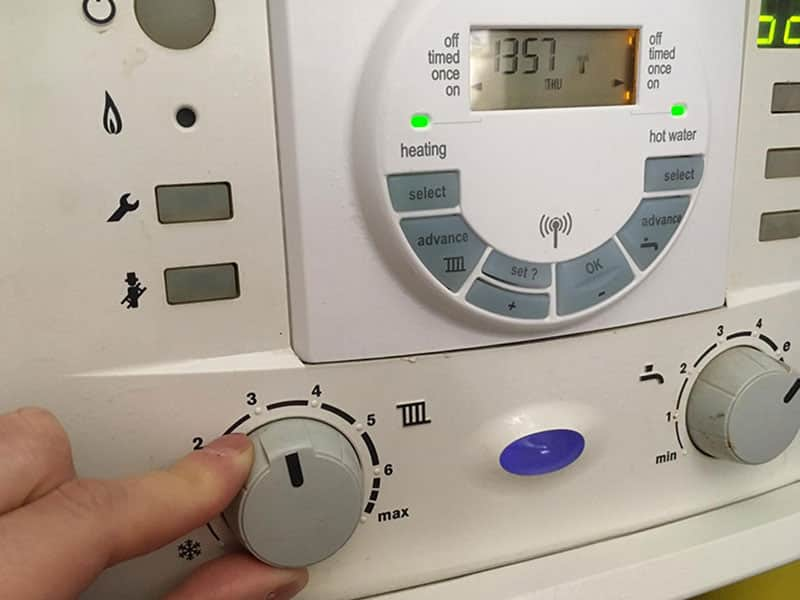The boiler temperature refers to the temperature of the water within a boiler. Adjusting the water temperature on a boiler can offer several benefits, kind of like finding that sweet spot on the stove when cooking. First off, it’s all about efficiency. Imagine your boiler as the heart of your heating system. By tweaking the water temperature, you can ensure it’s working at its most effective level. Think of it like finding the right balance; too hot, and you’re wasting energy too cold, and you might struggle to keep your home warm.
Another perk is customisation. Different weather conditions or personal preferences might call for a change in how much warmth you want. If it’s a chilly winter night, you might want the boiler to pump out a bit more heat. On a milder day, you could dial it back a bit. Adjusting the water temperature gives you the flexibility to tailor your heating system to your comfort needs.
Energy savings also come into play. Picture your boiler like a car’s engine – the harder it works, the more fuel it burns. By fine-tuning the water temperature, you’re essentially optimising your boiler’s performance. This not only helps keep your energy bills in check but also contributes to a more environmentally friendly setup. It’s like making sure your car is running smoothly instead of burning unnecessary fuel.
Then there’s the longevity of your heating system. Just like any machine, boilers have a lifespan. By ensuring the water temperature is set at the right level, you’re preventing unnecessary wear and tear. It’s a bit like regular maintenance for your car. You wouldn’t want to rev the engine too high all the time, right? Adjusting the water temperature is a bit like giving your boiler a well-deserved tune-up, potentially extending its life, and saving you from unexpected breakdowns.
What is the difference between boiler temperature and room temperature?
The boiler temperature refers to the temperature of the water within a boiler which needs to be a certain warmth to ensure the boiler and heating system operates efficiently and effectively. It needs to be high enough to transfer sufficient heat to the water that circulates through the system.
On the other hand, the temperature on a thermostat or within the rooms in a home typically refers to the ambient air temperature. Thermostats are devices used to control heating and cooling systems in homes of buildings. Property owners can set the thermostat to a specific temperature, and when the actual temperature deviates from this set point, the thermostat signals the heating system to adjust itself accordingly.
The difference between the boiler temperature and the thermostat/home temperature is primarily due to the different purposes these measurements serve. The boiler temperature is focused on the heat source itself, ensuring it is at the right level to efficiently transfer heat to the circulating fluid. The thermostat and home temperature, on the other hand, are concerned with maintaining a comfortable ambient temperature within a living or working space.
In a wet heating system, the boiler heats water and this heat is then distributed throughout the building to raise the ambient air temperature to the desired level set on the thermostat. The thermostat monitors the air temperature and signals the boiler to turn on or off to maintain the set temperature. Therefore, while the boiler temperature is crucial for the operation of the heating system, the thermostat and home temperature are more focused on providing comfort to the occupants.
The heating flow temperature of your boiler is the temperature at which water leaves your boiler on its journey to your radiators – this is sometimes called the boiler flow temperature. For example, if you set your thermostat to 19°C, your boiler then heats water much hotter than that and sends it to your radiators to warm your home until the air around the thermostat reaches 19°C.
Many boilers are set to heat this water to 75-80°C. but many homes with condensing combi boilers can be suitably warmed with boiler flow temperatures of 60-65°C or lower. Lowering the boiler flow temperature means your boiler uses less gas and operates more efficiently – meaning lower energy bills while still enjoying a warm home.
How to adjust water temperature on a boiler
Now you understand what the boiler temperature is referring too and why adjusting it can be beneficial, you will want to know how to adjust it to find your ideal boiler flow temperature?
It is always advisable to adapt your boiler settings with the advice of a boiler engineer particularly if you have a system or regular boiler that keeps water stored in a tank. This is because stored water needs to be heated a certain amount to avoid Legionella bacteria resulting from contaminated water.
However, if you have a combi boiler (which most homeowners do nowadays), you’ve checked your boiler manual, and you’ve made sure it is safe, you can adjust the boiler flow temperature yourself. In fact, Nesta have made this super easy with their interactive boiler temperature tool which will guide combi boiler owners through the process of changing the boiler flow temperature settings for your boiler every step of the way.
Once you have adjusted your flow temperature, you may notice a few changes to your heating:
- Radiators may be cooler to the touch – this is normal, and most homes can be heated effectively with slightly cooler radiators.
- You may notice a reduction in gas use. Because your boiler is now running more efficiently, you will reduce the amount of gas it needs to heat up your home.
- Your home may take slightly longer to warm up and reach the temperature set on the thermostat. For many people, this difference isn’t noticeable. If you find your rooms are taking too long to heat up, you may want to increase the flow temperature by 5°C.
Remember, the lower you go, the more you’ll save so if you find your home is heating well at 60°C, try reducing the temperature further by 5°C. Many homes can be heated a flow temperature of 55°C or below. You can always turn it back up to 60°C again if you find your home is taking too long to warm up.
Optimising your heating with this one simple adjustment can really make a difference to your energy usage and energy bills and ensure the longevity of your boiler.
If you are not confident adjusting the boiler flow temperature yourself, our expert team of heating engineers will be happy to advise. Why not book a boiler service while you’re at it and we can give your boiler a complete check to ensure you’re winter ready. 0208 8797372.

